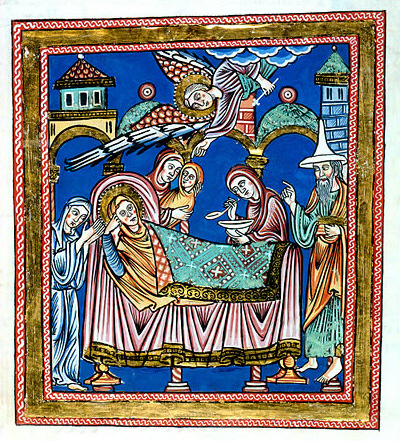|
PC-SAFT
PC-SAFT (perturbed chain SAFT) is an equation of state that is based on statistical associating fluid theory (SAFT). Like other SAFT equations of state, it makes use of chain and association terms developed by Chapman, et al from perturbation theory.Chapman, Walter G., et al. "SAFT: Equation-of-state solution model for associating fluids." ''Fluid Phase Equilibria'' 52 (1989): 31-38. However, unlike earlier SAFT equations of state that used unbonded spherical particles as a reference fluid, it uses spherical particles in the context of hard chains as reference fluid for the dispersion term.Gross J, Sadowski G. Perturbed-chain SAFT: An equation of state based on a perturbation theory for chain molecules. Industrial & engineering chemistry research. 2001 Feb 21;40(4):1244-60. PC-SAFT was developed by Joachim Gross and Gabriele Sadowski, and was first presented in their 2001 article. Further research extended PC-SAFT for use with associating and polar molecules, and it has also been ... [...More Info...] [...Related Items...] OR: [Wikipedia] [Google] [Baidu] |
Statistical Associating Fluid Theory
Statistical associating fluid theory (SAFT) is a chemical theory, based on perturbation theory, that uses statistical thermodynamics to explain how complex fluids and fluid mixtures form associations through hydrogen bonds. Widely used in industry and academia, it has become a standard approach for describing complex mixtures. Since it was first proposed in 1990, SAFT has been used in a large number of molecular-based equation of state models for describing the Helmholtz energy contribution due to association. Overview SAFT is a Helmholtz energy term that can be used in equations of state that describe the thermodynamic and phase equilibrium properties of pure fluids and fluid mixtures. SAFT was developed using statistical mechanics. SAFT models the Helmholtz free energy contribution due to association, i.e. hydrogen bonding. SAFT can be used in combination with other Helmholtz free energy terms. Other Helmholtz energy contributions consider for example Lennard-Jones interact ... [...More Info...] [...Related Items...] OR: [Wikipedia] [Google] [Baidu] |
Equation Of State
In physics and chemistry, an equation of state is a thermodynamic equation relating state variables, which describe the state of matter under a given set of physical conditions, such as pressure, volume, temperature, or internal energy. Most modern equations of state are formulated in the Helmholtz free energy. Equations of state are useful in describing the properties of pure substances and mixtures in liquids, gases, and solid states as well as the state of matter in the interior of stars. Though there are many equations of state, none accurately predicts properties of substances under all conditions. The quest for a universal equation of state has spanned three centuries. Overview At present, there is no single equation of state that accurately predicts the properties of all substances under all conditions. An example of an equation of state correlates densities of gases and liquids to temperatures and pressures, known as the ideal gas law, which is roughly accurate ... [...More Info...] [...Related Items...] OR: [Wikipedia] [Google] [Baidu] |
Perturbation Theory
In mathematics and applied mathematics, perturbation theory comprises methods for finding an approximate solution to a problem, by starting from the exact solution of a related, simpler problem. A critical feature of the technique is a middle step that breaks the problem into "solvable" and "perturbative" parts. In regular perturbation theory, the solution is expressed as a power series in a small parameter The first term is the known solution to the solvable problem. Successive terms in the series at higher powers of \varepsilon usually become smaller. An approximate 'perturbation solution' is obtained by truncating the series, often keeping only the first two terms, the solution to the known problem and the 'first order' perturbation correction. Perturbation theory is used in a wide range of fields and reaches its most sophisticated and advanced forms in quantum field theory. Perturbation theory (quantum mechanics) describes the use of this method in quantum mechanics. T ... [...More Info...] [...Related Items...] OR: [Wikipedia] [Google] [Baidu] |
Joachim Gross
Joachim was, according to Sacred tradition, the husband of Saint Anne, the father of Mary (mother of Jesus), and the maternal grandfather of Jesus. The story of Joachim and Anne first appears in the Gospel of James, part of the New Testament apocrypha. His feast day is 26 July, a date shared with Saint Anne. In Catholic tradition The story of Joachim, his wife Anne (or Anna), and the miraculous birth of their child Mary, the mother of Jesus, was told for the first time in the 2nd-century apocryphal infancy-gospel the Gospel of James (also called the ''Protoevangelium of James''). Joachim was a rich and pious man, who regularly gave to the poor; however, Charles Souvay, writing in the ''Catholic Encyclopedia'', says that the idea that Joachim possessed large herds and flocks is doubtful. At the temple, Joachim's sacrifice was rejected, as the couple's childlessness was interpreted as a sign of divine displeasure. Joachim consequently withdrew to the desert, where he fasted and did ... [...More Info...] [...Related Items...] OR: [Wikipedia] [Google] [Baidu] |
Gabriele Sadowski
Gabriele Sadowski (born 18 February 1964) is a German chemist. Early life and education Sadowski studied Chemistry at Technische Universität Leuna-Merseburg from 1982 to 1987. She finished her doctorate in 1991 at Technische Universität Leuna-Merseburg. She completed her dissertation at Technische Universität Berlin in 2000. Career and research Her research focuses on Polymer Thermodynamics, Thermodynamics of Pharmaceutical Systems, and Reaction Thermodynamics. Since 2001, she is full professor at TU Dortmund University. She took over the responsibility of prorector research in 2016. Awards and honours She was awarded the Gottfried Wilhelm Leibniz Prize in 2011 and she is a member of the North Rhine-Westphalian Academy of Sciences, Humanities and the Arts. See also * Timeline of women in science References {{DEFAULTSORT:Sadowski, Gabriele 1964 births Living people 21st-century German chemists German women chemists 21st-century German women scientists Technis ... [...More Info...] [...Related Items...] OR: [Wikipedia] [Google] [Baidu] |
